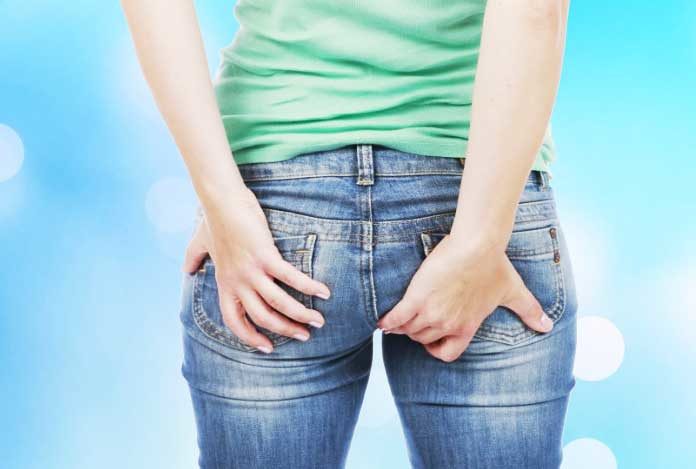
Hemorrhoids, also known as piles, is used to refer to vascular structures in the anal canal. There are veins present in the anus or lower rectum. The term ‘hemorrhoids’ is used to define the disease when the veins become swollen or inflamed. When stretching occurs in the walls of the veins, irritation occurs. Thus, hemorrhoids are enlarged clumps of blood vessels, that are present in the lower rectum and anus. Rectum ends into the anus. The anus marks the end of the digestive tract from where feces are expelled out from the body.
Sometimes, swelling occurs in hemorrhoids as the veins become enlarged and the walls become stretched, leading to irritation while passing stool. There are two types of hemorrhoids – external and internal. External hemorrhoid originates in the anus, whereas internal hemorrhoid develops in the rectum.
Hemorrhoid or piles causes pain and irritation. The term word ‘Hemorrhoid’ evolved from the Greek word ‘haimorrhoides,’ meaning ‘veins will discharge blood.’ Research suggests that three out of four people have incidence of hemorrhoids at least once in their lifetime. Napoleon too suffered from Hemorrhoids and because of the excruciating pain, he lost his battle at Waterloo.
Around 50% of adults face symptoms of hemorrhoids by the age of 50. While hemorrhoids are more common in the age group of 45 to 65, it can occur in young adults as well. Hemorrhoids are common in both men and women. This condition affects 5% of the Americans. According to National Institute of Diabetes and Digestive Kidney Disease (NIDDK), as people start aging the connective tissue between anus and rectum starts to weaken. This makes them more prone to develop hemorrhoids. Pressure associated with bowel movement during constipation can cause the condition. Pressure on the abdomen during pregnancy can also results in the swelling of veins, which may lead to hemorrhoids.
Hemorrhoids are one of the most common causes of rectal bleeding. To rule out the possibilities of being a more serious condition, one must see a doctor, who would also help remove hemorrhoids that are very painful and won’t go away on their own.
Internal Hemorrhoids are so much inside the rectum that one cannot see or feel them. There are not many pain sensing nerves near internal hemorrhoids, so you don’t feel the hurt. Bleeding is a tell-tale sign of this condition. External hemorrhoids lie under the skin around the anus. There are many pain-sensing nerves present here, so these hurt as well as bleed. External hemorrhoids are more common and cause a lot of trouble. They cause pain, itching and create problems and difficulty while sitting.
Types and Symptoms of Hemorrhoids
Types of Hemorrhoids:
Broadly, hemorrhoids are of two types:
1. Internal Hemorrhoids: They are present inside the rectum only. One cannot see or feel them as they are far inside, where there are no nerve endings as well. Rectal bleeding that happens as a result of hemorrhoids do not require much treatment as the condition becomes better on its own. These are often treatable by home remedies that contain witch hazel and cayenne that are natural ingredients. Internal hemorrhoids are further divided in two grades:
- Grade 1 Hemorrhoids: These hemorrhoids are swelling in the lining of the anus. Externally, these are not visible. They bleed but do not come out or project out of the anus.
- Grade 2 Hemorrhoids: These are larger than grade 1 hemorrhoids. They extend in the anus and get pushed out when stool passes through the anus, but soon recede back inside the anus once the pressure is released.
2. External Hemorrhoids: These are located outside the anus and can be felt and seen as well. These are very painful and discomforting. The anus is made up of very sensitive nerve endings; therefore, external hemorrhoids are painful.
3. Prolapsed Hemorrhoids: Internal Hemorrhoids can prolapse, which means it leaves the rectum and projects itself outside the body. Prolapsed hemorrhoids protrude from the anus and extend outside the body, so they put pressure on the nerve endings in the anus and are quite painful. In appearance, their color is pinker than the anus. These hemorrhoids can be pushed back into the rectum and sometimes, go inside on their own.
4. Thrombosed Hemorrhoids: This is a type of hemorrhoid that has prolapsed or has gotten projected outside the anus, and has formed a blood clot. These are quite painful and must be treated as soon as possible to get relief from the excruciating pain. Sometimes, thrombosed hemorrhoids dissolve on their own, so one can wait for them to cure if the pain is bearable. However, if pain is unbearable, one must see a doctor. They swell up and their color gradually changes. They may turn purple or blue and may burst while eliminating feces from the body.
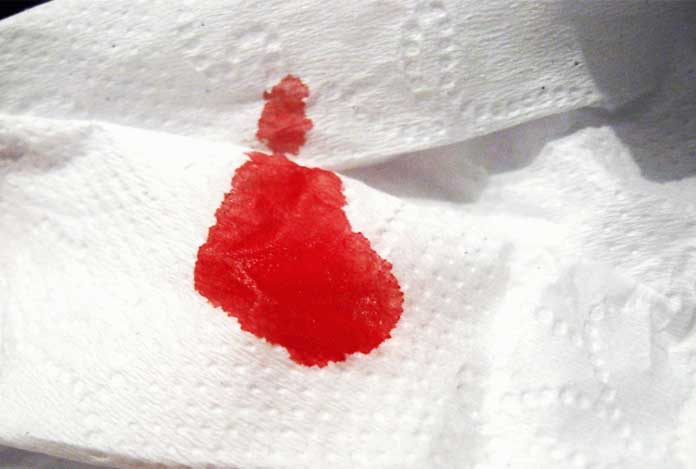
Symptoms of Hemorrhoids:
The symptoms of hemorrhoids may include the following:
- Bleeding during bowel movement. One may find spots of blood on toilet tissue paper or a small amount of bright red blood in the toilet.
- Irritation and itching in the anal region
- Discomfort or sensation of pain
- Lump near the anus, which may be painful or sensitive
- Swelling around the anus
- Moist, pink bumps around the edge or bulging around the anus.
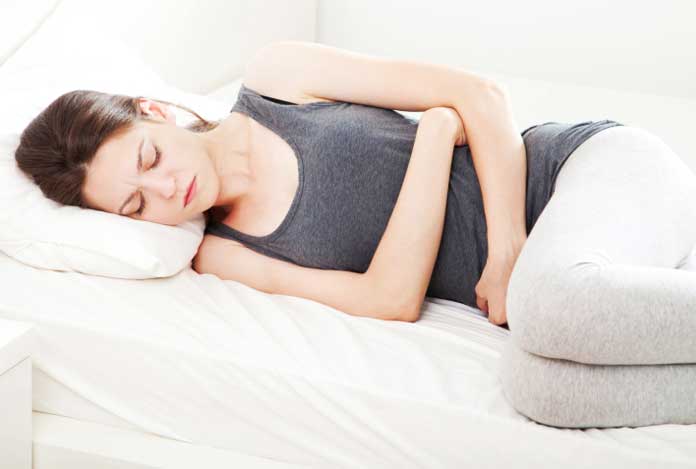
Risk Factors for Hemorrhoids
Swollen veins or hemorrhoids can stem from increased pressure in the lower rectum. In most cases, the cause for hemorrhoids is not known. Some conditions that increase the risk of hemorrhoids are as follows:
- Alcoholism
- Anal intercourse
- Heart disease or severe liver disease
- Loss of pelvic muscle due to age, surgery, pregnancy or childbirth
- Little to no physical activity
- Sedentary jobs that require sitting for longer durations
- Obesity
- High-fat and low-fiber diet, i.e., diet lacking grain foods, vegetables and fruits
- Long-term diarrhea and constipation
- Age is another risk factor for the occurrence of hemorrhoids as the condition is more common in middle-aged and older adults
- Overweight people are more likely to develop hemorrhoids. This is because extra weight exerts pressure on the anus and rectum
- Hemorrhoids can also be hereditary. If people in your family have the condition, you are more likely to have the disease

Do I have Hemorrhoids?
Symptoms could be caused by other conditions as well. So, it is important to get it well diagnosed. Other conditions with similar symptoms are discussed below:
- Colon Cancer and Rectal Cancer: These cancers occur near the rectum and can cause bleeding and discomfort creating symptoms that are similar to hemorrhoids.
- Inflammatory Bowel Disease (IBD): Inflammatory Bowel Disease (IBD) can cause rectal bleeding and discomfort. These are chronic diseases that start in young adults. Symptoms include fever, weight loss, cramps and diarrhea.
- Anal Fissures: These are small tears in the anal canal and present symptoms similar to hemorrhoids. They cause pain, burning sensation and bleeding. The main cause of anal fissures is constipation.
- Pruritis ani: This condition is often mistaken for hemorrhoids as it causes itching and burning in the rectal area. There is an intense urge to scratch or rub. It happens as a result of too much food sensitivity or moisture.
- Genital Warts: This is a sexually transmitted condition. Genital warts grow in the anal area and have symptoms like bleeding and discomfort. This is caused by human papillomavirus (HPV).
Thus, for correct diagnosis of the condition and to be sure that it is hemorrhoids only, it is best to consult a doctor.
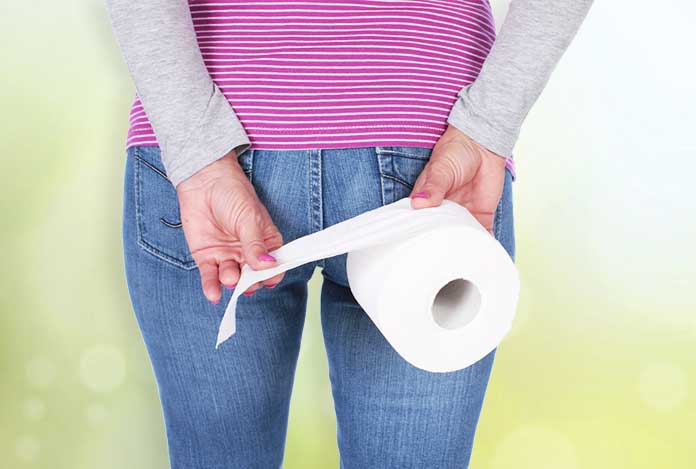
Causes and Prevention of Hemorrhoids
Causes of Hemorrhoids:
Hemorrhoids occur because of weakness of tissues that support the blood vessels in the anal region. Following factors can contribute to the development of hemorrhoids:
- Hereditary: This may be due to congenital weakness of the walls of the veins.
Sitting Posture: Sitting for long periods can be a predisposition for piles or hemorrhoids. - Heavy Weight Lifting: Lifting heavy weights on a regular basis.
Long-Term Constipation or Diarrhea: Straining due to constipation and over purgation can lead to hemorrhoids. - Obesity: Being overweight increases the risk of developing this condition.
- Improper Diet: Eating junk food and diet low in fiber can lead to the development of hemorrhoids.
- Obstruction in the Rectum or Anal Canal: An obstruction or abnormal growth on the way to the anal canal result in this condition.
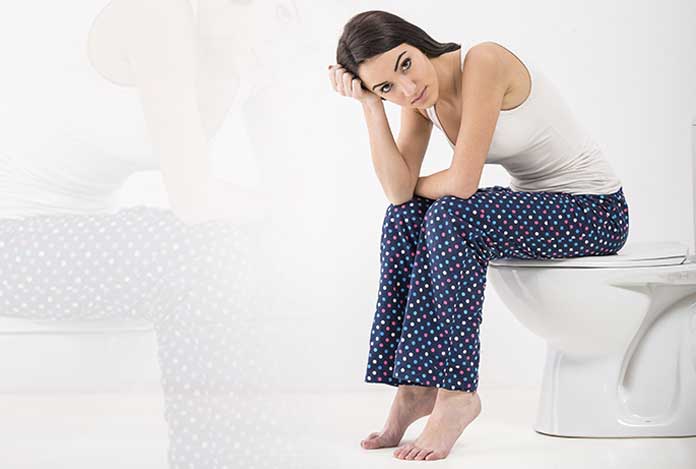
Prevention of Hemorrhoids:
The following preventive methods can be adopted:
- Increase Intake of Fiber: Hemorrhoids mainly occur in people, who are constipated or have poor bowel movements. Thus, it is advised to fill up on fiber through diet or supplements. Good sources of fiber include legumes like split peas, black beans and lentils as well as whole grains, such as barley and brown rice.
- Drink Enough Water: Along with a healthy, fiber-rich diet, water is also essential to smooth out the process of bowel movement. It prevents constipation and reduces straining.
- Do Plenty of Exercises: Exercise keeps the colon active and makes it more functional. Staying active means spending less time sitting and putting more pressure on the veins in the rectum area.
- Prevent Frequent Constipation: If you are constipated, some fiber supplements like psyllium capsules can help prevent painful hemorrhoids.
- Don’t Fight the Urge to Go to the Loo: This is the simplest way to prevent hemorrhoids. So, go when you have to go. Don’t stop the movement.
- Don’t Strain or Put Pressure on Your Veins: This happens when you try really hard to have a bowel movement. Other situations can also cause straining like lifting heavy weights, pregnancy, chronic cough and so on.
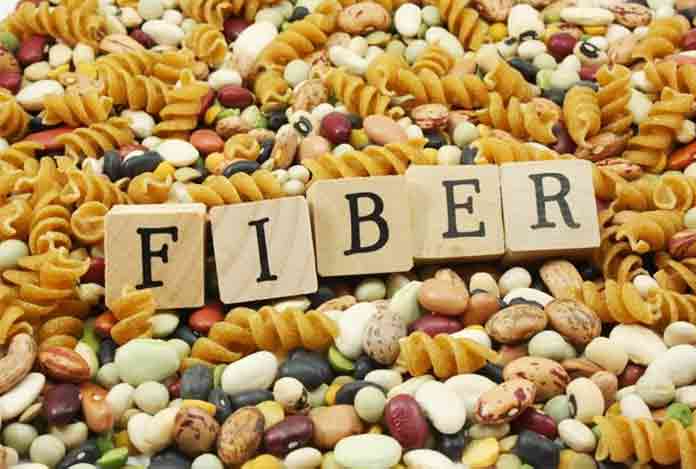
Diagnosis and Tests of Hemorrhoids
Doctor may be able to see if one has external hemorrhoids simply by looking. To diagnose internal hemorrhoids, anal canal and rectum may be examined. The diagnosis of hemorrhoids is based on a patient’s medical history and physical examination:
- Digital Examination: During digital rectal examination, doctors insert a gloved lubricated finger in the rectum. If he or she feels anything unusual like growths, they may report it as hemorrhoids. This exam suggests what further testing is required.
- Visual Inspection: Internal hemorrhoids are soft, so they cannot be felt in rectal examination. The doctor will examine the lower portion of the colon and rectum with anoscope, proctoscope or sigmoidoscopy.
- Colonoscopy: Doctor may want to examine the colon using colonoscopy if symptoms suggest that one has a digestive system issue or have risks for colorectal cancer.
Your doctor may employ other tests to know the underlying cause of the symptoms. These tests may include:
- Barium enema
- Flexible sigmoidoscopy – a test that looks inside the anus, rectum and lower part of the colon for abnormal growths

Treatment and Care of Hemorrhoids
Hemorrhoids go away on their own after a few days. But, some treatments are also available that can help prevent itching and discomfort. The type of treatment will depend on the location of the hemorrhoids in the anal canal.
Non-surgical treatments for treating hemorrhoids in the lower part of the canal are very painful and nerves can detect the sensation of pain. In these cases, hemorrhoid surgery is recommended.
If there is inflammation in your back passage, doctor may prescribe corticosteroid creams that contain steroids. Corticosteroid creams should not be used for more than a week as the skin around the anus may worsen the irritation. Common painkillers like paracetamol can help relieve the pain of hemorrhoids. If there is excessive bleeding, you should not use non-steroid anti-inflammatory drugs (NSAIDs) like ibuprofen as this could worsen the bleeding condition.
One must also make sure that one does not use codeine painkillers as they can cause constipation. Doctor may prescribe products containing local anesthetic for treating painful hemorrhoids.
If one suffers from constipation, he/she may be put on laxatives, which will help empty the bowel. If changes in diet and medicines do not seem to improve the symptoms, then you may be further referred to a specialist. If there are hemorrhoids in the upper part of your anal canal, then non-surgical procedures like banding and sclerotherapy may be adopted. Banding means placing a tight elastic base around the base of the hemorrhoids to stop the flow of blood. Hemorrhoids then fall out within a week of banding. Ulcers can also occur at the point of banding. However, these go away on their own.
- Injections (Sclerotherapy): It is an alternative to banding. During this treatment, a chemical is injected into the blood vessel in the back. The pain is relieved by numbing the nerve endings at the point of injection.
- Electrotherapy: Also known as electrocoagulation, it is another alternative to banding. In this procedure, a device called proctoscope is inserted inside the anus to identify the hemorrhoid. Thereafter, an electric current is passed at the base of the hemorrhoid. The aim of electrotherapy is to increase the volume of the blood to the hemorrhoid, which shrinks it. Rectal bleeding is a side effect of this procedure.
- Surgery: Although hemorrhoids can be treated by the above-mentioned methods, in some cases, surgery may be required, especially when the above treatment methods are not effective. Around 10% of people need surgery. Surgery is generally more beneficial in cases, where hemorrhoids have developed below the dentate line. There are different types of surgery that can be used to treat hemorrhoids. Generally, surgery involves removing hemorrhoids or reducing the volume of the blood supply.
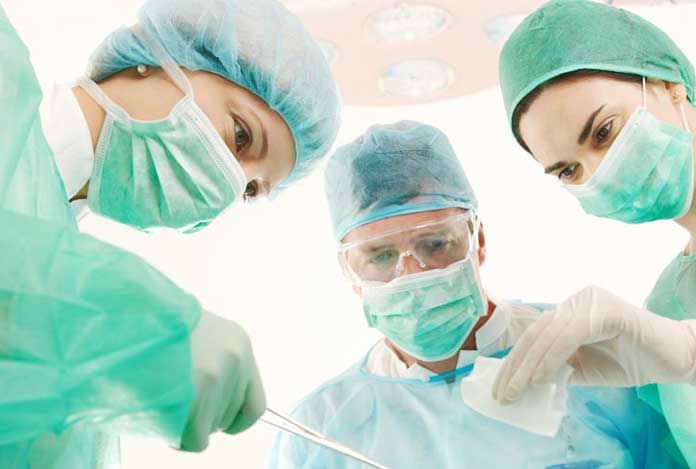
OTC Medications and Self-Management Methods for Hemorrhoids
Over-the-Counter (OTC) Medications for Hemorrhoids:
Various creams, suppositories, ointments are available in pharmacies without prescription. These can be used for relieving swelling and discomfort and should be used for 5-7 days at a time and not more than that. If it is used longer than that, the sensitive skin around the anus may get irritated. Also, medications must be combined with diet and self-care methods.
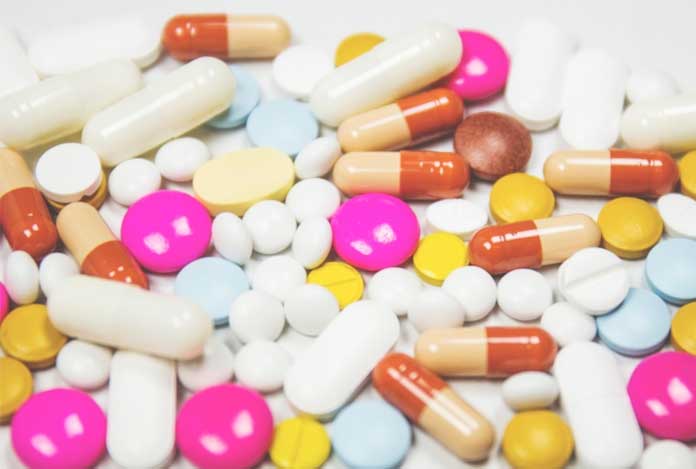
Self-Management Methods for Hemorrhoids:
- Eat Fiber-Rich Foods: Eating more fruits, fiber, whole grain foods will help soften the stool. This will also help avoid straining that can worsen the symptoms.
- Use Topical Treatments: One can apply an over the counter hemorrhoid cream or suppository like hydrocortisone, or use witch hazel pads and numbing agent.
- Take Special Care of Cleanliness of Anus: Bathe daily to clean the anus with water. Do not use alcohol-based or other such wipes.
- Hot Water Bath: Soak your anal area in warm water for 10-15 minutes at least two or three times a day.
- Apply Cold Packs: Application of ice-packs or cold compresses around the anus could relieve the swelling.
- Take Oral Pain Relievers: You can use acetaminophen (paracetamol) or aspirin to help get rid of the discomfort.
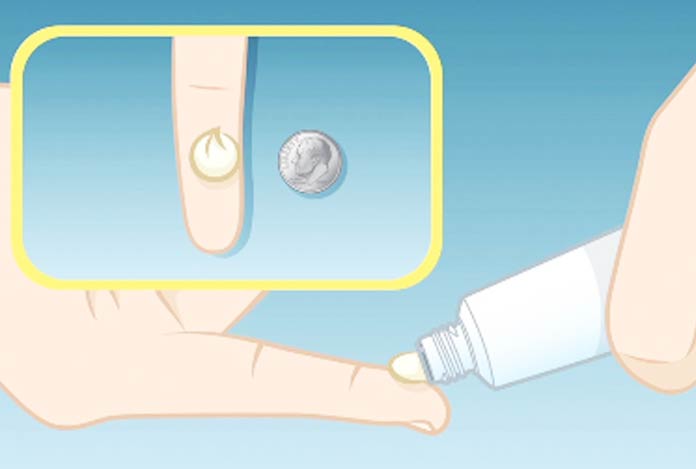
Natural Ways to Cure Hemorrhoids
For the treatment of hemorrhoids, natural remedies are known to be highly effective. These are discussed below:
- Sitz Baths: Warm water baths are recommended for people having hemorrhoids. They are advised to sit in warm water several times a day, particularly after bowel movement.
- Witch Hazel: It reduces pain, bleeding and irritation till hemorrhoids fall out. It contains tannins and oils that reduce inflammation and bleeding. It has anti-inflammatory properties, so it tightens the skin around the anus.
- Apple Cider Vinegar: It reduces pain and itching and thus, helps in bringing relief in hemorrhoids.
- Psyllium Husk: The increased fiber intake softens the stool, making it easier to pass. Not too much of fiber should be used as it can cause cramping and bloating as a consequence of gas formation.
- Aloe Vera: It has anti-inflammatory properties and so, soothes the inflammation of hemorrhoids. Research shows that aloe vera has some benefits in inflammatory skin conditions.
- Tea Tree Oil: Tea tree oil has anti-inflammatory and antiseptic properties. This may help in reducing itching and swelling caused by hemorrhoids.
- Epsom Salt and Glycerin: Mix 2 tablespoons of Epsom salts with 2 tablespoons of glycerin, and apply the mixture to the painful hemorrhoids. Let it remain for 15-20 minutes. Repeat it every 4-6 hours till pain eases.
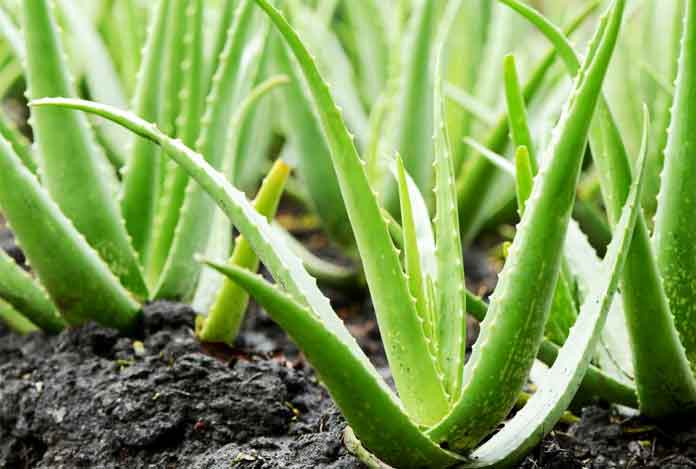
Health Tip by Expert
For treating and preventing hemorrhoids it is essential to eat enough fiber (25 gm for women and 38 gm for men) and drink at least 8 glasses of water a day. These techniques help soften the stool; making it easier to pass the bowel and prevent the problem from cropping up.




